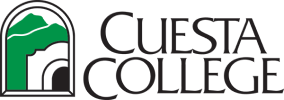
Program Summary
ART HISTORY - Associate in Arts for Transfer
The Art History program in Fine Arts prepares students for a major in art history at baccalaureate institutions. Two tracks are offered: Associate in Arts in Art History and Professional Practices (AHPP AA) and Associate in Arts in Art History for Transfer (AA-T in Art History). The AA-T in Art History degree guarantees admission with junior status at a campus of the California State University (CSU) system in Art History or a similar major.
Art History is the study of the visual art from prehistory to the present. It places emphasis on the visual language, historical context, cultural values, techniques, materials, and technological changes in the history of art and architecture. The Art History program provides students with a core curriculum that will prepare them with the knowledge and skills required to succeed in the study of Art History. Students will develop skills for critical and analytical thinking, perceptive reading and observation, and interpretive analysis.
The Associate Degree for Transfer (AA-T or AS-T) is a special degree offered at California Community Colleges. Students who earn an AA-T or AS-T degree are guaranteed admission to a campus within the California State University (CSU) system in a similar major, although not necessarily to a specific campus. Students who complete an AA-T or AS-T are given priority consideration when applying to a particular program that is similar to the student’s community college major and will be given a special GPA advantage when applying to CSU impacted campuses or majors. Students who are planning to pursue an AA-T or AS-T are strongly advised to meet with a counselor for additional information about this transfer program.
The Associate in Arts for Transfer degree requires:
(1) Completion of 60 semester units that are eligible for transfer to the California State University, including both of the following:
(A) California General Education Transfer Curriculum (Cal-GETC).
(B) A minimum of 18 semester units or 27 quarter units in a major or area of emphasis, as determined by the community college district.
(2) Obtainment of a minimum grade point average of 2.0.
(3) Earn a “C” or better grade in all courses required for the major or area of emphasis. A “P” (Pass) grade is an acceptable grade for courses in the major.